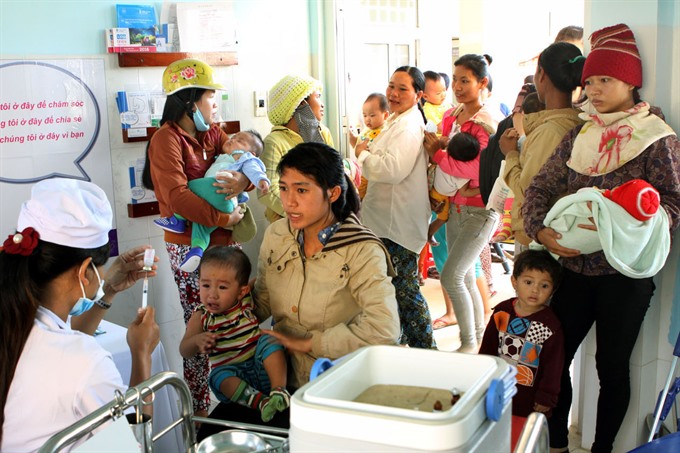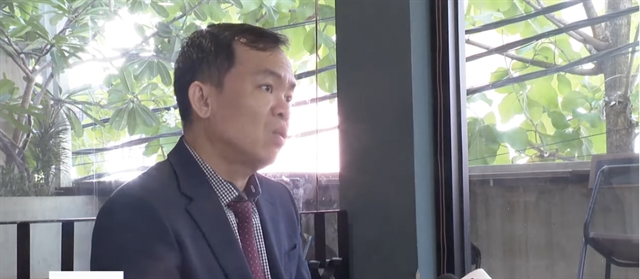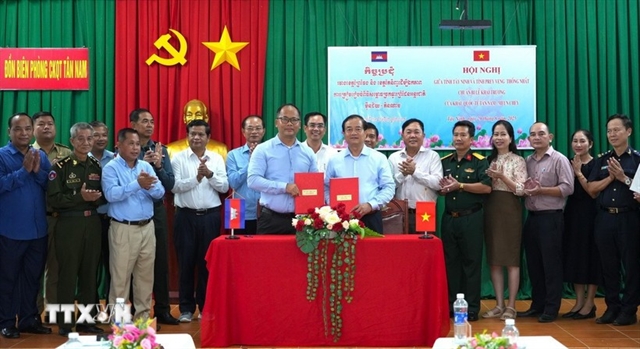 Society
Society

Việt Nam is expected to produce six-in-one vaccines in 2017 or 2018 and by 2020 these will be used widely in the country, according to the health ministry.
 |
Doctors provide vaccinations for children in Central Highlands Đắk Lắk Province’s Dak Lieng Commune. The country expects to successfully produce six-in-one vaccines this year or in 2018. — VNA /VNS Photo Dương Ngọc |
HÀ NỘI – Việt Nam is expected to produce six-in-one vaccines in 2017 or 2018 and by 2020 these will be used widely in the country, according to the health ministry.
Việt Nam already manufactures 11 out of 12 vaccines used in the nationwide expanded free immunisation programme for children, including vaccines against tuberculosis, diphtheria, whooping cough, tetanus, measles, poliomyelitis, hepatitis B, Japanese meningitis B, cholera, typhoid and rubella. In November 2016, Viêt Nam announced the successful production of a measles-rubella vaccine (MR) for the first time.
Việt Nam is one of only 25 countries in the world that can produce vaccines and is the fourth in Asia to manufacture the MR vaccine, following Japan, India, and China, the Nhân Dân (People) weekly reported.
This is the first vaccine that has been produced in Việt Nam by the health ministry’s Centre for Research and Production of Vaccines and Biology (POLYVAC) under a technology-transfer project launched by the Japan International Co-operation Agency (JICA).
In 2015, the WHO certified that Việt Nam has a fully-equipped national regulatory authority (NRA) system that ensures the safety and efficacy of vaccines produced and used in Việt Nam.
Deputy Health Minister Nguyễn Thanh Long said the NRA achievement would open up opportunities for Việt Nam to export vaccines and contribute in the fight against global epidemics.
In a recent NRA assessment, the WHO said that four of Việt Nam’s vaccines ─ Japanese B encephalitis, measles, hepatitis A, and hepatitis B ─ can apply for WHO pre-appraisal before being sold in bulk to international organisations.
Local vaccine manufacturing facilities can currently supply enough doses for both domestic needs and export demand.
In recent years, the Company for Vaccine and Biological Production No.1 (VABIOTECH) has exported over three million doses of Japanese B encephalitis vaccine to India. Japanese encephalitis vaccines are also penetrating the market of East Timor. In addition, 32,000 doses of hepatitis A vaccine have been exported to the Republic of Korea and 115,000 doses of oral cholera vaccine to Sri Lanka, the Philippines and India.
Việt Nam currently has four factories producing vaccines, using equipment and technology that meets CGMP-WHO standards: VABIOTECH; Pasteur Da Lat Vaccine Company (DAVAC); POLYVAC; and the Institute of Vaccines and Medical Biologicals (IVAC).
However, challenges remain ahead for the vaccine production. Việt Nam is able to produce only single vaccines or certain types of material for mixed vaccines (multi-function vaccines that have from four to six vaccines in one dose).
In 2019, Việt Nam will no longer receive support from the Global Alliance for Vaccines and Immunization (GAVI) in regard to the five-in-one vaccine that protects people from diphtheria, tetanus, whooping cough, polio, and Hib disease.
The health sector is making efforts to produce five-in-one and six-in-one vaccines but is still encountering difficulties relating to technology and capital.
Deputy Minister Long said the research and production of five-in-one and six-in-one vaccines was among the top priorities of the country, and urged the supply of improved technology to produce such vaccines. — VNS




